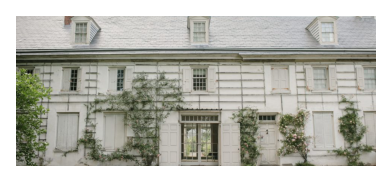Wyck
6026 Germantown Ave
Philadelphia, PA 19144
United States
Wyck
Wyck

The house called “Wyck” is an extraordinary multi-generational artifact, created and maintained by nine generations of a Quaker family that made important contributions to every episode of Philadelphia’s history.
The land was acquired in 1689 by Hans Millan (d. 1698), a Swiss Quaker, who erected a simple wood (or perhaps log) house on the west part of the plot that is occupied by the house today. Between that structure and the Germantown Pike, his son-in-law Dirk Jansen (c. 1680-1760) built a stone house, which was complete by 1736. After Jansen’s daughter Catharine (1703-1786) inherited the houses, she replaced the original wood dwelling with second new house in 1771-1773. These houses were connected by 1777, when they served as a British hospital in the Battle of Germantown, but they generally functioned separately, with the rear house rented to a tenant farmer.
Catherine’s husband was the pioneering industrialist Caspar Wistar (1696-1752), who made a fortune manufacturing brass buttons and glassware, and they used the house in Germantown as a summertime retreat. Wyck passed to their daughter Margaret and her husband Reuben Haines, and when they both died of yellow fever of 1793, their son Caspar Haines (1762-1801) and his wife Hannah Marshall (1765-1828) inherited the property and made their permanent home in Germantown, where many had found refuge during the epidemic. A prosperous brewer, Haines built the Germantown Brewery 100 feet north of the house in 1794.
Their son Reuben Haines III (1786–1831) inherited the house in 1820 and brought his wife, Jane Bowne (1790-1843) and young family to live here. Like his father a brewer, it was he who gave the name “Wyck” to the house, inspired by the engraving of a house of that name in Gloucestershire.
Haines was a member of the generation of Philadelphians who, on the model of Franklin and Jefferson, devoted themselves to creating the new nation’s institutions of science, education, medicine, industry, and art. He helped organize and/or supported the Academy of Natural Sciences, the Franklin Institute, several fire companies, schools for poor children, the American Philosophical Society, the Philadelphia Society for Promoting Agriculture, and Charles Willson Peale's Philadelphia Museum. He was an investor in the Philadelphia, Germantown, and Norristown Railroad, one of the first in the nation, and an overseer of the Philadelphia public schools. Haines sponsored the research of John James Audubon, the educational reforms of Amos Bronson Alcott, and the utopian planning of Robert Owen.
The jumbled combination of architecture that was Wyck was inconvenient, and in the autumn of 1820, the Haineses asked their friend the Greek Revival architect William Strickland to make improvements. While leaving the modest colonial exterior largely intact, he transformed the interior, blending the two houses together to create a single mansion. He connected all the ground floor rooms with wide doorways, making one unit 60 feet long, and in the middle of the house he created a sunny conservatory with glass-paned doors on both sides. The work was complete by 1824, and in step with this remaking, Jane Haines transformed the gardens, drawing on the latest thinking about the science and art of landscape design.
The Haines family continued to occupy the house into the third quarter of the twentieth century, but, realizing the unique qualities of their home and of its collections of artifacts and documentation, they began to seek ways to preserve their extraordinary legacy. 272 boxes of family papers were deposited at the Historical Society of Pennsylvania, and in 1973 Mary T. Haines, the widow of the ninth-generation owner, Robert Bowne Haines (1893-1967), gave the property to the Wyck Charitable Trust.